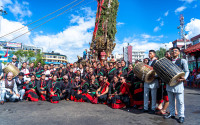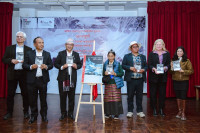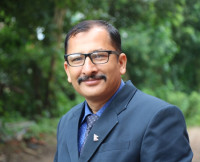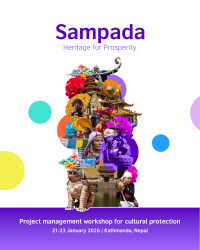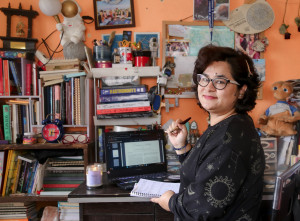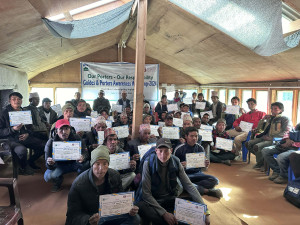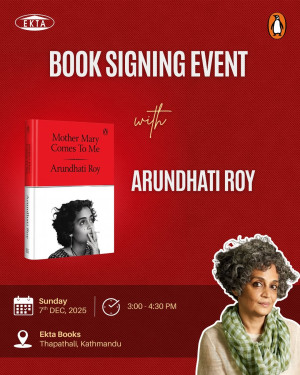Culture & Lifestyle
Thecho’s Newa community celebrates Mataya Jatra with tradition and satire
With vibrant performances and satire on migration and leadership, the annual Jatra connects past heritage with today’s social concerns.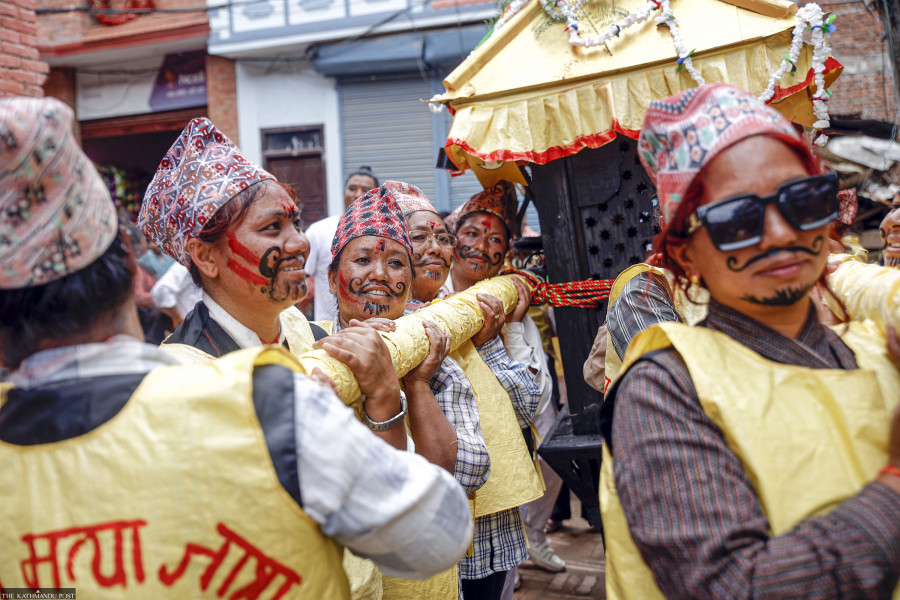
Prasant Mali
Every year, on the day after Gai Jatra, the Newa community celebrates the Mataya Jatra. In Thecho, Godavari Municipality–12, however, the celebration is particularly special.
Along with the chariot procession, the festival also included a replica of the Bhel Kwa—a clay pot filled with black chhyang (an alcoholic beverage) regarded as a symbol of Bhairav—in the parade.
Local resident Ratna Bahadur Mali said, “Interest among the younger generation in cultural heritage is declining. This presentation was meant to be a satire of that trend.” He added that the event was made possible with everyone’s support and cooperation.
The first group in the procession featured the Lakhe dance. Two women at the front followed them, holding a banner that read “Welcome to Thecho Mataya Jatra.” Behind them, with cloth headbands, were Saraswati Dhime Khalah manager Jitmell Maharjan, Mayor Gajendra Maharjan of Godavari Municipality, and others, welcoming the crowd as they moved forward.
After that came a line of women dressed in haku patasi (traditional Newa dress) and guniyo cholo (traditional dress), adorned with garlands around their necks, silver chains, and pauju anklets. Another group followed, performing the Baukhi Daygu, a ritual to ward off evil spirits from entering Thecho settlement. Raj Maharjan of the local Kutujol Basuri Baja Khalah said they presented the ritual through a play to help the younger generation understand the significance of this tradition.
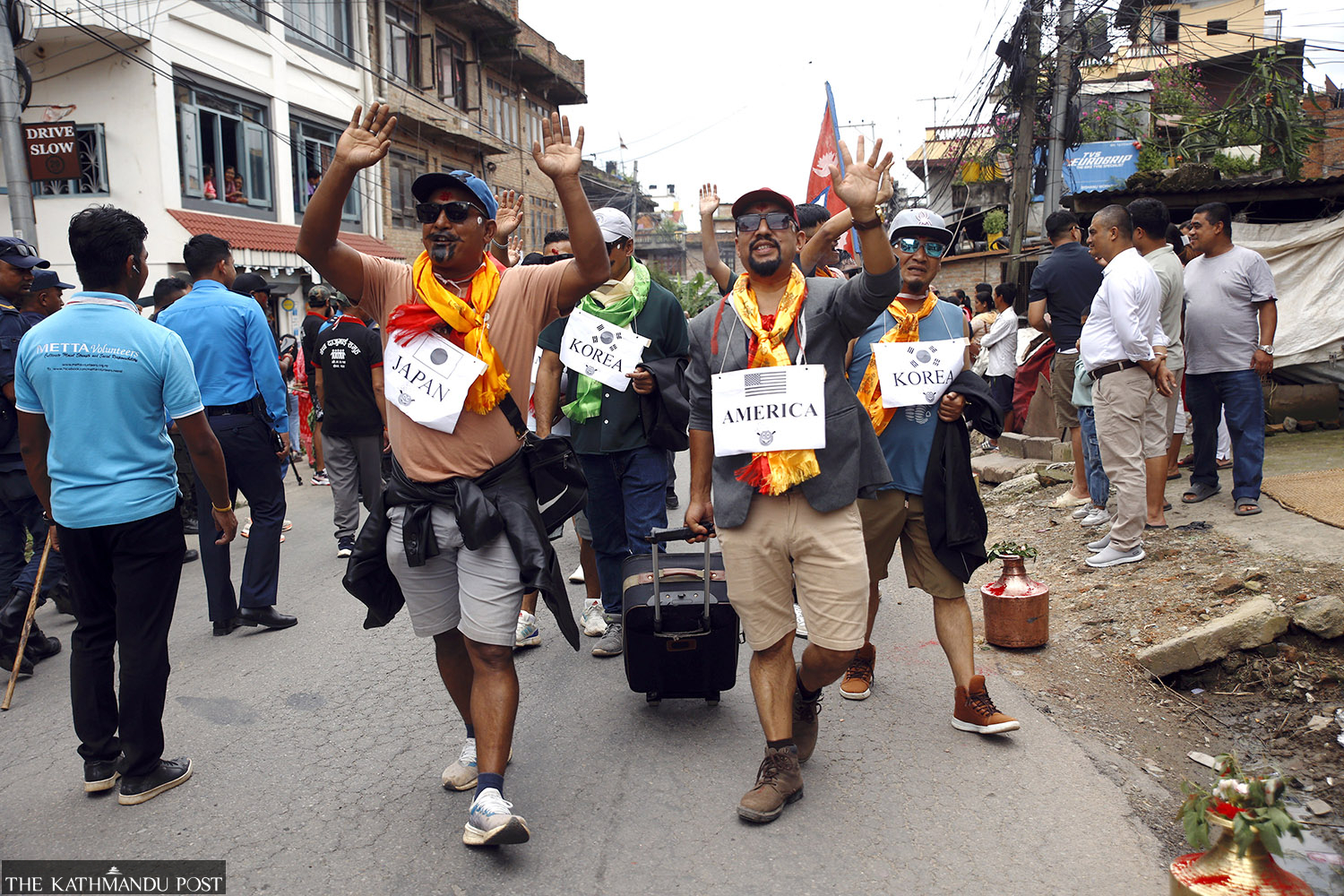
Behind them was a display showing a traditional water mill, now disappearing, being turned by a machine, with people chewing tobacco while grinding maize and wheat. They were participants from Swon Manka Khalah of Thecho’s Tallo Lachi Tole. Khalah chairperson Icha Maharjan said they aimed to inform the younger generation about the traditional mill and the hard way of life in earlier times.
Nhuchhe Dafa Khalah, on the other hand, carried placards satirising the younger generation’s neglect of dafa bhajan (traditional devotional hymns). The placards read, “Dafa bhajans will disappear, where is the younger generation?”, and “We must preserve dafa bhajan”, and “Dafa culture is the identity of the Newa community,” as they moved forward in the procession.

Similarly, young people carried placards mocking the lack of employment at home. They wore backpacks and scarves, with signs reading “Canada,” “Korea,” “Qatar,” and “Saudi Arabia,” showing the scene of people leaving the country to work abroad. Some also satirically displayed archaeological items for sale with prices, emphasising the need to protect and promote cultural heritage.
The residents of Khacha Tole satirised political leaders by calling them incompetent. They also displayed a scene of drying rice while putting a baby to sleep inside a bala (thatched hut). Local resident Krishna Mali said he presented this scene to highlight that most farmland has now been turned into plots, and that agricultural land should not be destroyed.
These scenes aimed not only to entertain but also to bring a period of history to life. Jitmell Maharjan, the manager of Saraswati Dhime Khalah, said the festival tries to present endangered culture and history in an artistic way. “The procession combines religion, daily life, and entertainment,” he added.
The Mataya Jatra is organised in turns by 12 different musical groups (baja khalah) in Thecho. This time, it is the turn of the Saraswati Dhime Khalah.




 7.12°C Kathmandu
7.12°C Kathmandu
